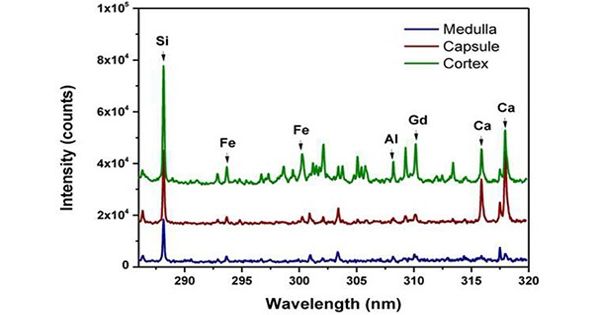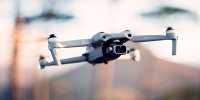The invention discloses a rapid pesticide residue detection method based on a laser-induced breakthrough spectrum (LIBS) technique. The researcher tries to the improvement of the performance of a commercial hand-held laser-induced breakdown spectroscopy instrument for steel analysis using multiple artificial neural networks. Laser-induced breakdown spectroscopy (LIBS) is a rapid chemical analysis tool. A powerful laser pulse is focused on a sample to create micro-plasma. The elemental or molecular emission spectra from that micro-plasma can be used to determine the elemental composition of the sample.
A double pulse LIBS system has been developed for material identification in high-pressure environments in excess of 600bars or 6000m sea depth. Tests have been conducted at high seas and pressure chambers with impressive results.
Compared to more conventional science, such as atomic absorption spectroscopy and inductively coupled plasma optical emission spectroscopy (ICP-OES), LIBS has several special advantages: no pre-treatment samples, simultaneous multi-element identification, and real-time non-contact measurements. These benefits make it ideal for the functional study of solids, gasses, and liquids.
Traditional LIBS and extensions
The recent launch of hand-held laser-induced breakdown spectroscopy (HH-LIBS) instruments was unanimously seen by the LIBS group as a breakthrough for broader dissemination of the technique in areas where it fits well, i.e. industrial or, in general, out-of-the-lab applications.
Traditional LIBS systems based on a nanosecond pulse laser (ns-LIBS) have some drawbacks due to laser power strength, long pulse length, and plasma shielding effects. These concerns negatively impact the reproducibility and the signal-to-noise ratio. Femtosecond LIBS (fs-LIBS) can exclude plasma shielding as ultrashort pulse length restricts laser-matter interaction time. The femtosecond pulse has a high power density such that materials can be easily ionized and disassociated, resulting in a better signal-to-background ratio and more sensitive spectral resolution.
Filament-induced breakdown spectroscopy (FIBS) incorporates LIBS technology with femtosecond laser filament. A single laser filament is the product of the interaction between the Kerr self-focusing and plasma defocusing processes present in the propagation of ultrashort, high-intensity beams in a clear medium such as ambient air. Femtosecond laser filament creates a long and robust plasma laser channel that maintains the reliability of the laser power density and increases the stability of the measurement. However, the power and electron densities are saturated as the laser intensity grows. This is known as the laser strength clamping effect and reduces the detection sensitivity of FIBS.
Plasma grating
Luckily, the laser strength clamping effect can be resolved by plasma grating caused by the nonlinear interaction of several femtosecond filaments. The electron density in the plasma grating has been found to be an order of magnitude greater than that of the filament.
Based on this experience, researchers led by Heping Zeng at East China Normal University in Shanghai recently demonstrated a novel technique: plasma grating-induced breakdown spectroscopy (GIBS). The disadvantages of ns-LIBS, fs-LIBS, and FIBS can be easily solved by GIBS. For GIBS, the signal amplitude is increased more than three times and the plasma-induced lifespan is nearly double that of FIBS for the same initial pulse. Quantitative research is possible due to the lack of plasma shielding effects, high strength, and electron density of femtosecond plasma grating.
It is widely agreed that the inherent shortcomings of portable LIBS instruments may be partly resolved by the use of sophisticated chemometric methods for quantitative spectra analysis. On the other hand, the sophistication of the study should be appropriate for LIBS data to be interpreted by low-power computers controlling these methods.















